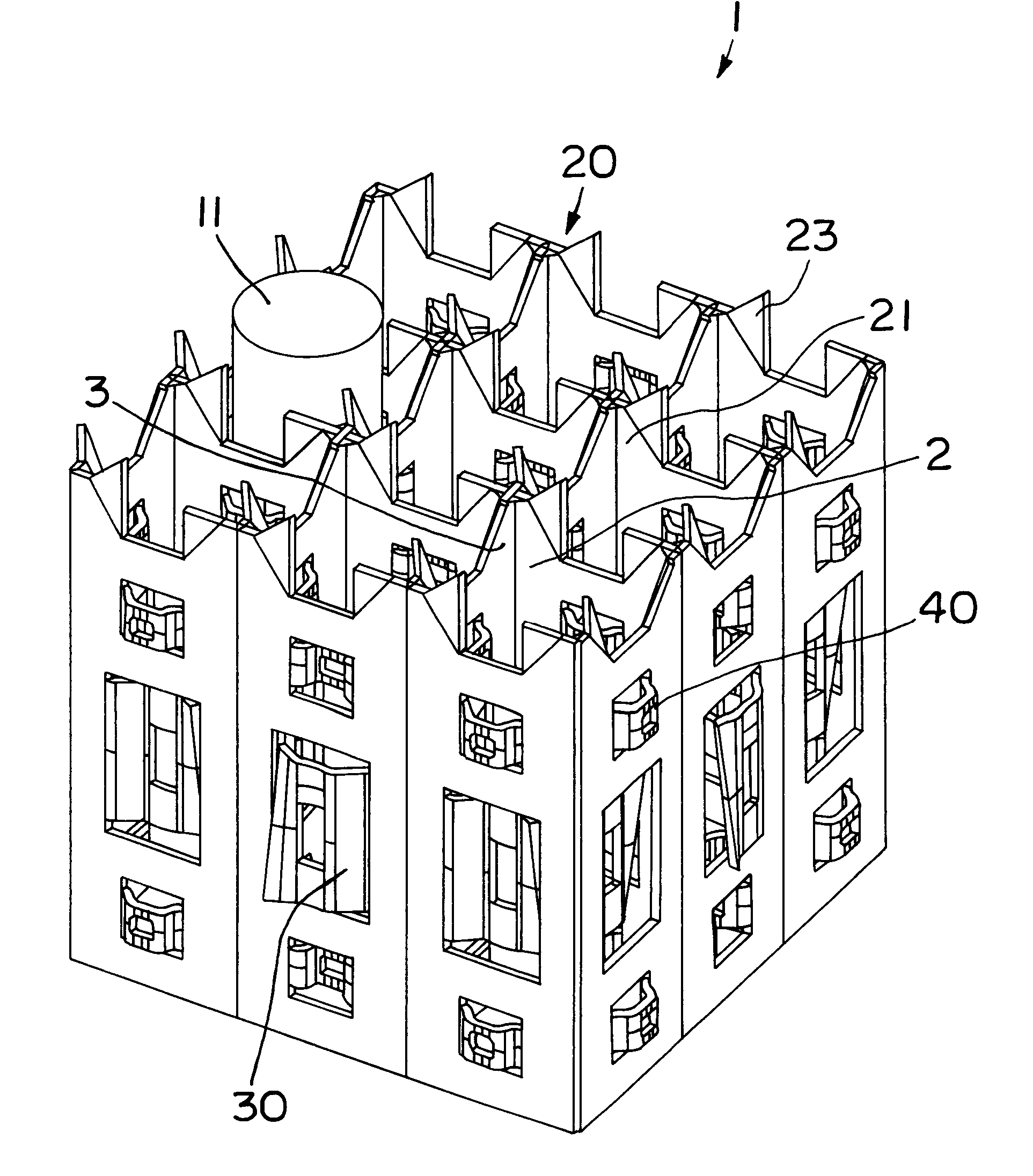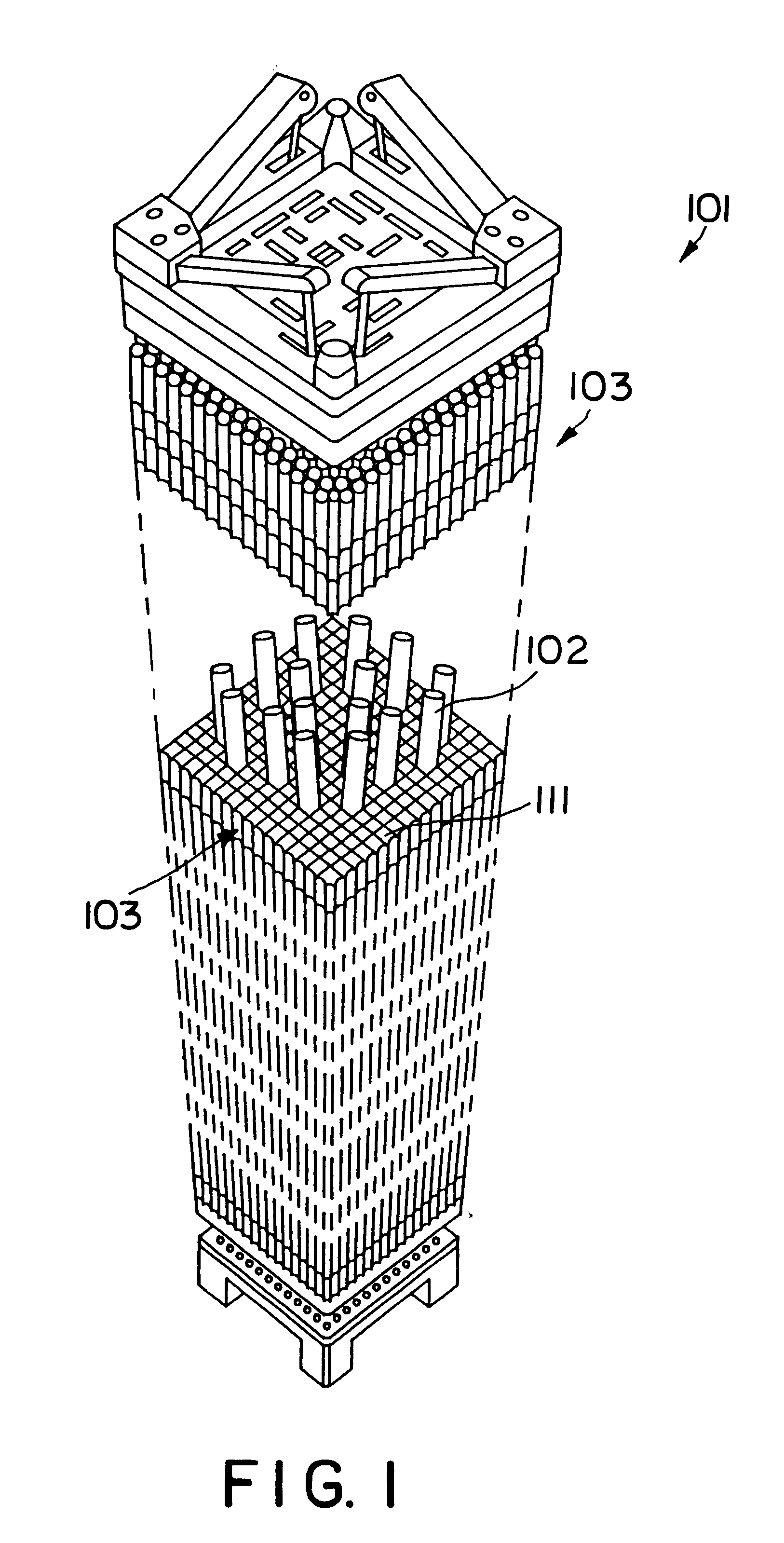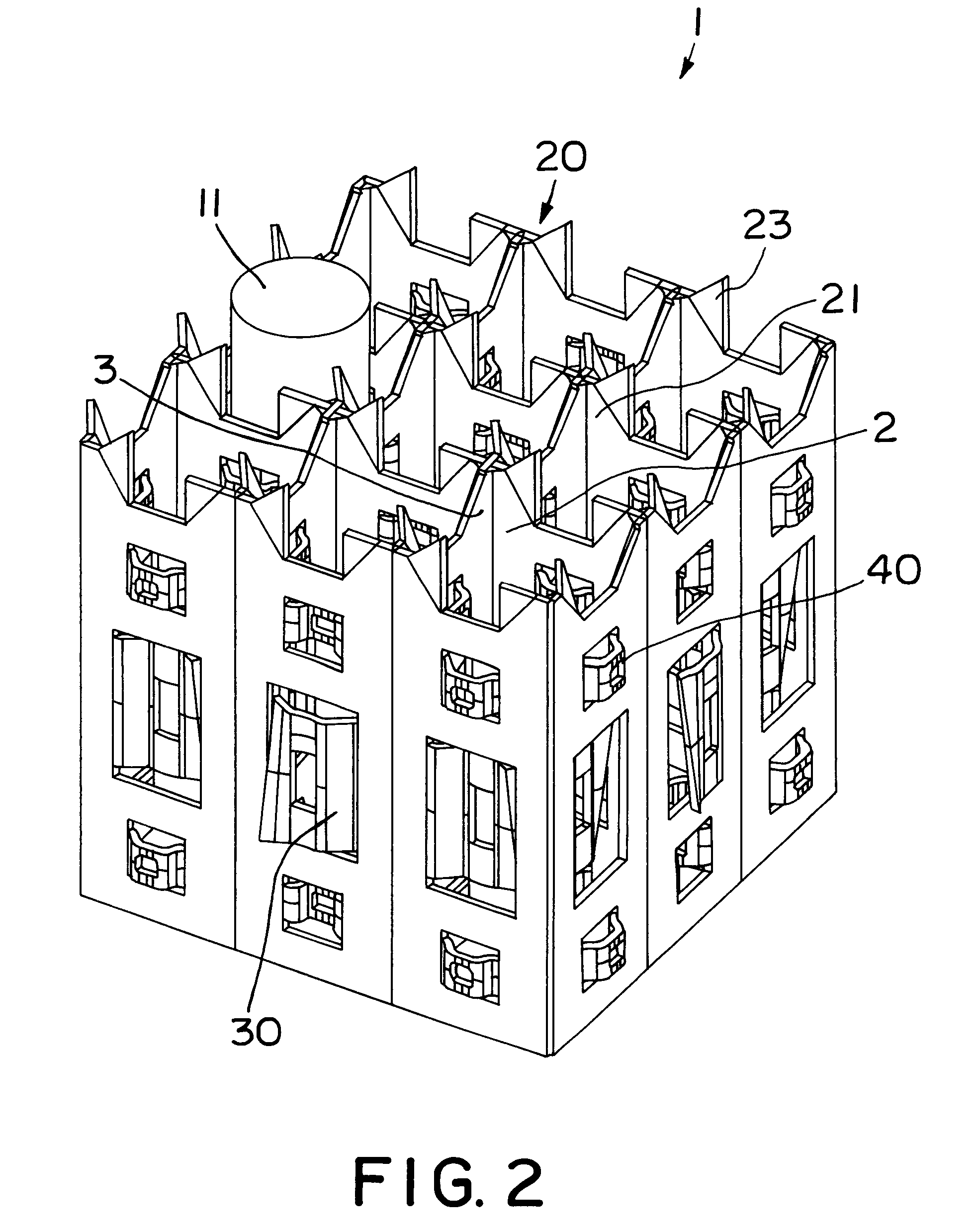Fuel assembly spacer grid with swirl deflectors and hydraulic pressure springs
a technology of swirl deflectors and fuel assembly spacers, which is applied in nuclear elements, greenhouse gas reduction, nuclear engineering, etc., can solve the problems of fuel elements being subjected to fretting wear, fuel elements vibrating, and fuel elements being reduced in the support force of the springs for fuel elements, so as to reduce the initial mechanical spring force, reduce the loss of pressure in the cooling water flow, and suppress the effect of fuel element vibration
- Summary
- Abstract
- Description
- Claims
- Application Information
AI Technical Summary
Benefits of technology
Problems solved by technology
Method used
Image
Examples
Embodiment Construction
Referring to FIG. 2, a fuel assembly spacer grid according to an embodiment of the present invention is illustrated. As shown in FIG. 2, the spacer grid, which is denoted by the reference numeral 1, includes a plurality of longitudinally-extending, parallel, spaced vertical straps 2 and a plurality of laterally-extending, parallel, spaced vertical straps 3 perpendicularly interconnecting the longitudinally-extending straps 2, in order to support fuel elements of a nuclear fuel assembly. The spacer grid 1 also includes a plurality of swirl deflectors 20 respectively provided at the upper ends of the interconnections between the straps 2 and 3, a plurality of springs 30 provided at the straps 2 and 3, and a plurality of dimples 40 provided at the straps 2 and 3. As shown in FIG. 3 viewing the spacer grid 1 from above, the springs 30 and dimples 40 have conformal contact portions having the same radius of curvature as fuel elements 11 to be supported by the spacer grid 1. The swirl def...
PUM
 Login to View More
Login to View More Abstract
Description
Claims
Application Information
 Login to View More
Login to View More - R&D
- Intellectual Property
- Life Sciences
- Materials
- Tech Scout
- Unparalleled Data Quality
- Higher Quality Content
- 60% Fewer Hallucinations
Browse by: Latest US Patents, China's latest patents, Technical Efficacy Thesaurus, Application Domain, Technology Topic, Popular Technical Reports.
© 2025 PatSnap. All rights reserved.Legal|Privacy policy|Modern Slavery Act Transparency Statement|Sitemap|About US| Contact US: help@patsnap.com



